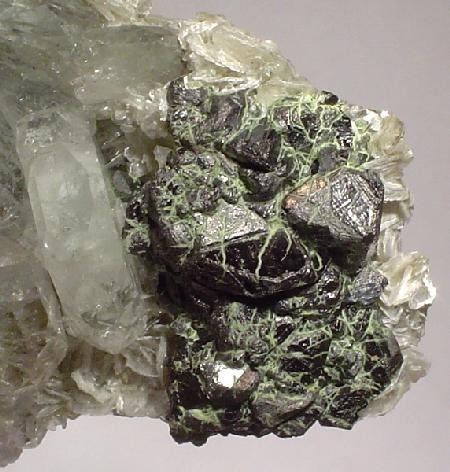Category Sulfide mineral Strunz classification 2.CB.15a Space group I4 | Formula(repeating unit) Cu2(Zn,Fe)SnS4 Crystal system Tetragonal | |
 | ||
Crystal class Disphenoidal (4)H-M symbol: (4) | ||
Kesterite is a sulfide mineral with a formula Cu2(Zn,Fe)SnS4. In its lattice structure, zinc and iron atoms share the same lattice sites. Kesterite is the Zn-rich variety whereas the Zn-poor form is called ferrokesterite or stannite. Owing to their similarity, kesterite is sometimes called isostannite. The synthetic form of kesterite is abbreviated as CZTS (from copper zinc tin sulfide). The name kesterite is sometimes extended to include this synthetic material and also CZTSe, which contains selenium instead of sulfur.
Occurrence
It was first described in 1958 for an occurrence in the Kester deposit (and the associated localilty) in Yana basin, Yakutia, Russia, where it was discovered.
It is usually found in quartz-sulfide hydrothermal veins associated with tin ore deposits. Associated minerals include arsenopyrite, stannoidite, chalcopyrite, chalcocite, sphalerite and tennantite.
Stannite and kesterite occur together in the Ivigtut cryolite deposit of South Greenland. Solid solution was found to exist between Cu2FeSnS4 and Cu2ZnSnS4 at temperatures above 680 °C. This accounts for the exsolved kesterite in stannite found in the cryolite.
